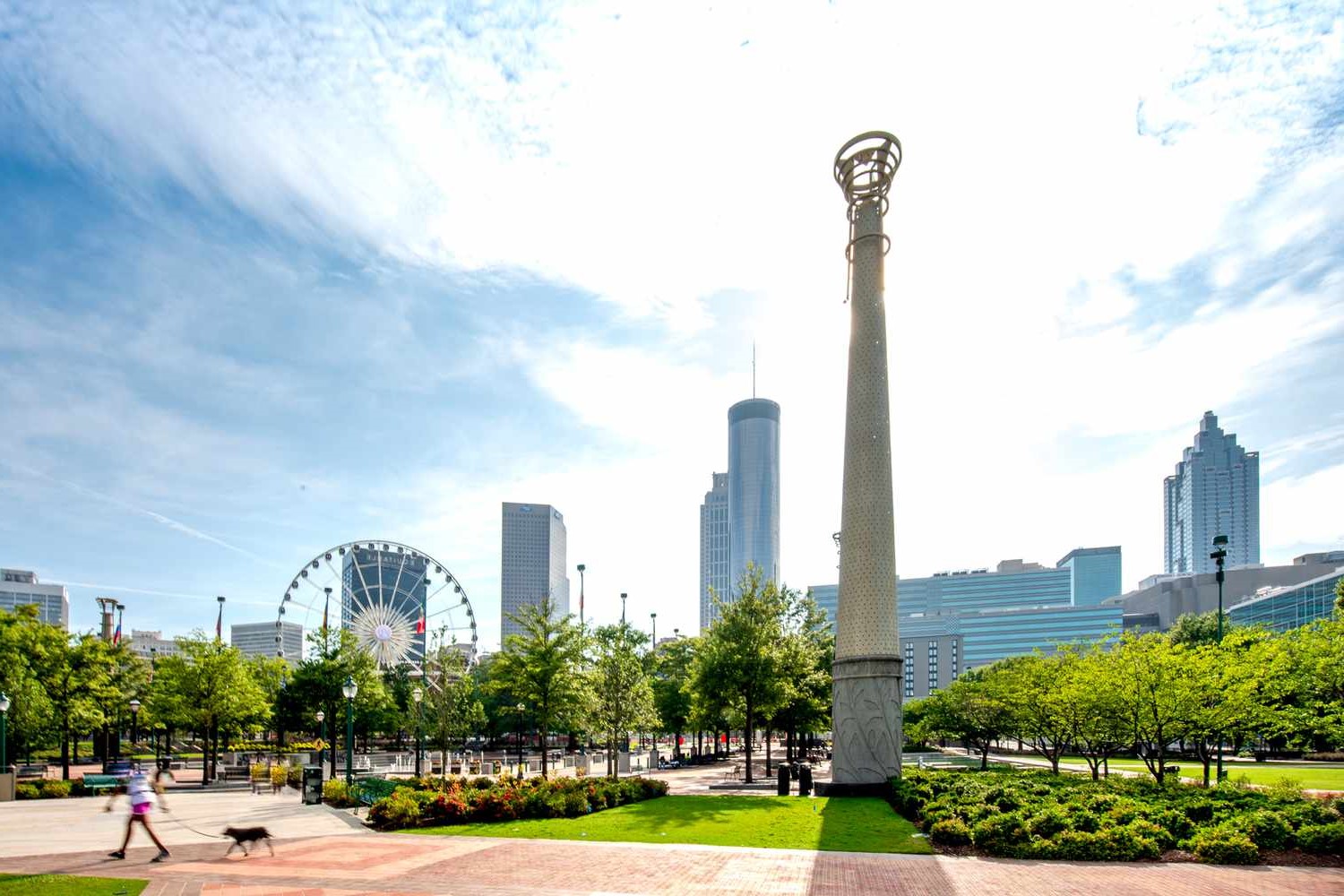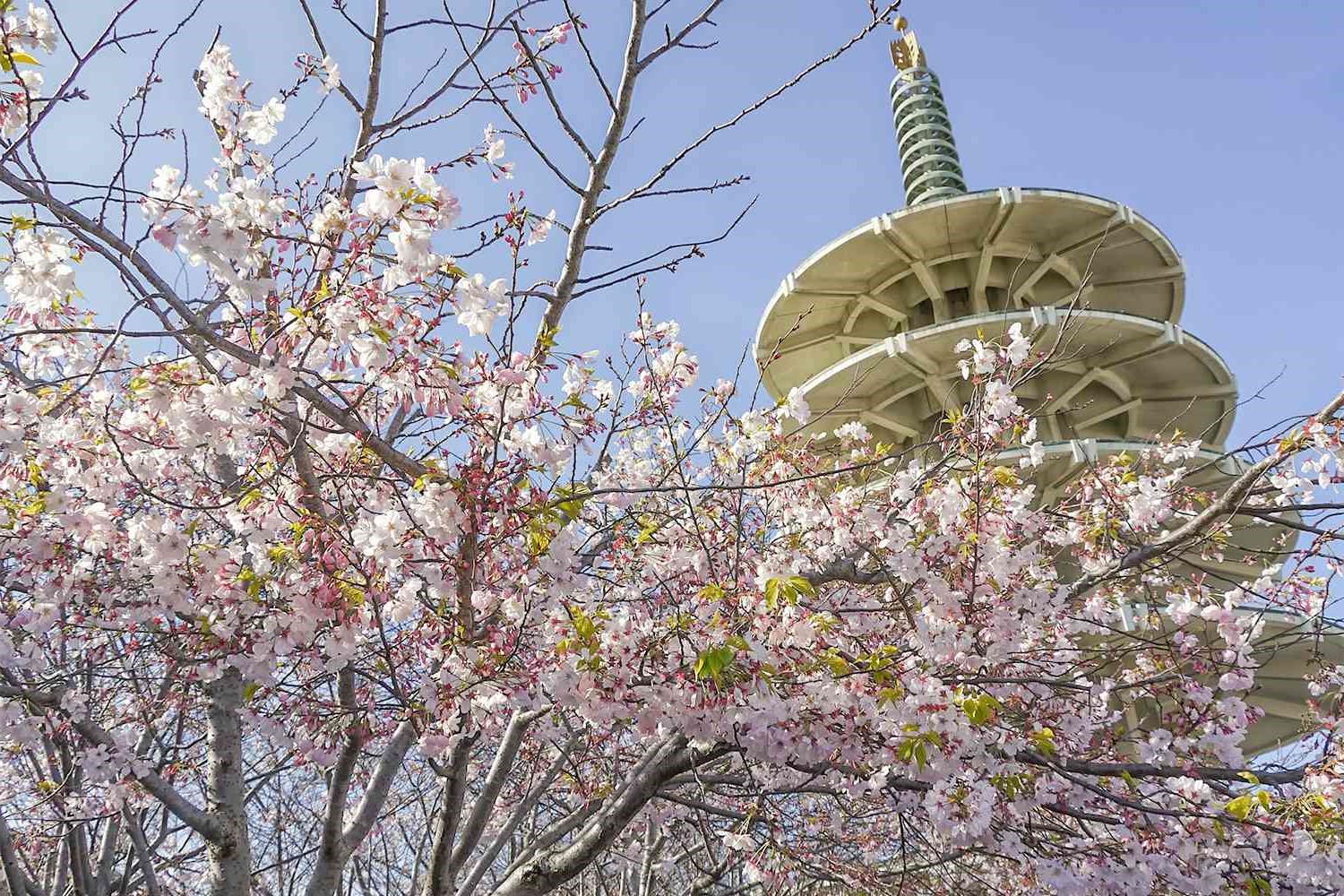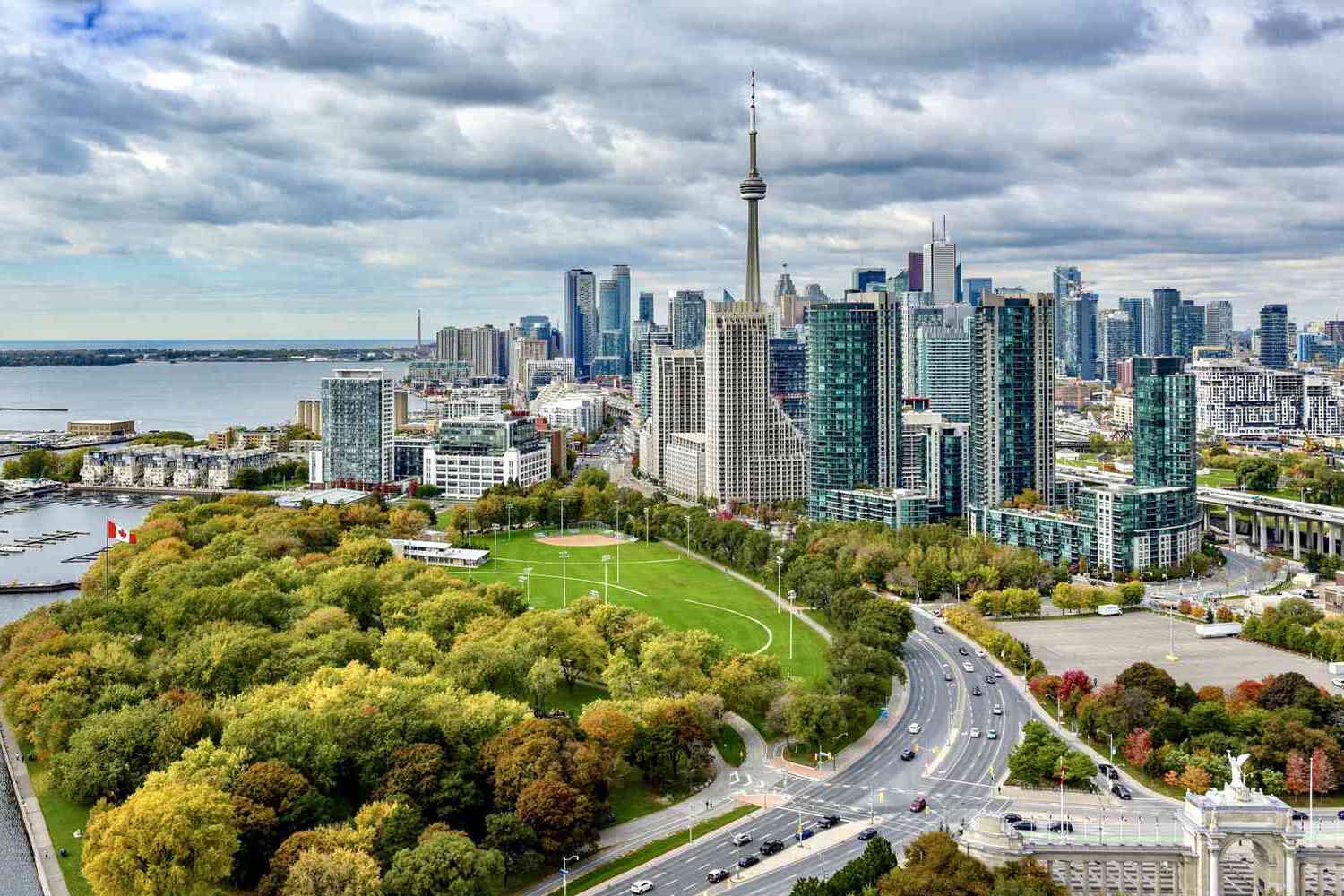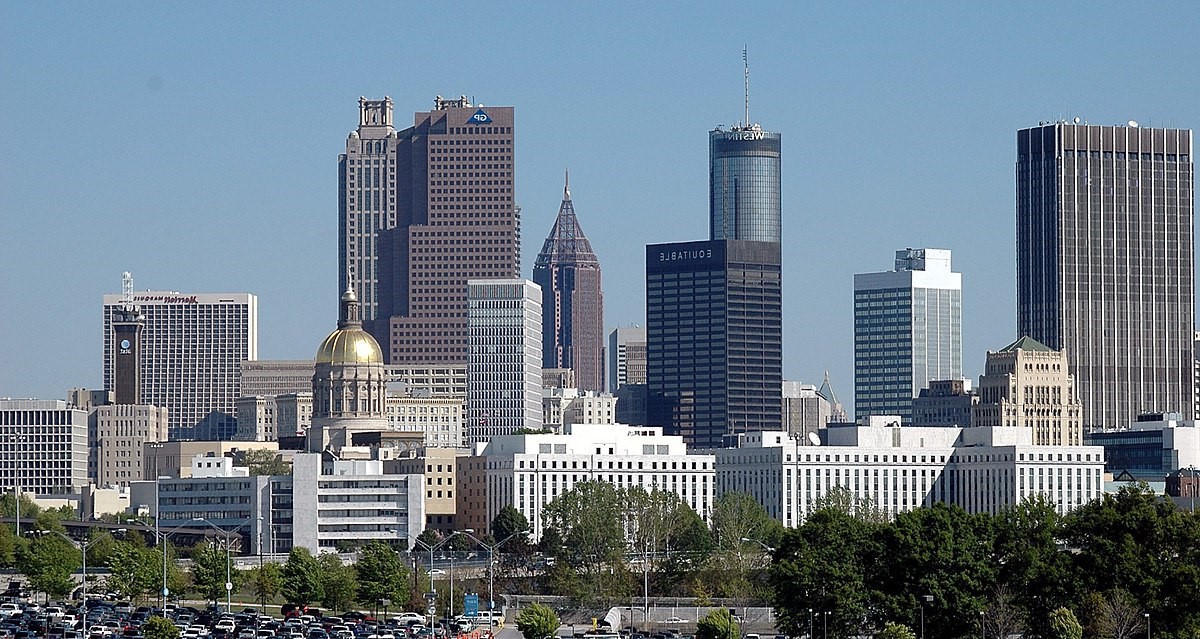Home>Weather and Climate>April Weather In Atlanta: A Comprehensive Guide


Weather and Climate
April Weather In Atlanta: A Comprehensive Guide
Published: March 6, 2024
Plan your activities in Atlanta with our comprehensive guide to April weather and climate. Get insights on temperature, precipitation, and more for a memorable trip.
(Many of the links in this article redirect to a specific reviewed product. Your purchase of these products through affiliate links helps to generate commission for Temperatures.com, at no extra cost. Learn more)
Table of Contents
Understanding Atlanta's Climate
Atlanta, the capital city of Georgia, boasts a diverse and dynamic climate that greatly influences the weather patterns experienced throughout the year. Situated in the southeastern region of the United States, Atlanta falls within the humid subtropical climate zone, characterized by distinct seasonal variations and occasional extreme weather events.
The city's climate is heavily influenced by its proximity to the Appalachian Mountains and the Gulf of Mexico. During the summer months, warm, moist air from the Gulf of Mexico flows into the region, contributing to Atlanta's hot and humid conditions. In contrast, the winter season brings cooler temperatures, occasionally dipping below freezing, as cold air masses from the north impact the area.
One of the defining features of Atlanta's climate is its variability. The city experiences a wide range of weather conditions, from thunderstorms and heavy rainfall to occasional snowfall during the winter months. This variability is attributed to the city's location within the transition zone between the subtropical and temperate climate regions.
Moreover, Atlanta's elevation, which ranges from approximately 738 to 1,050 feet above sea level, also plays a role in shaping its climate. The variation in elevation contributes to temperature differences across the city, with higher elevations generally experiencing slightly cooler temperatures compared to lower-lying areas.
The city's climate is also influenced by the urban heat island effect, a phenomenon in which metropolitan areas experience higher temperatures than their rural surroundings due to human activities and infrastructure. Atlanta's extensive urban landscape, with its abundance of concrete and asphalt, absorbs and retains heat, leading to elevated temperatures, particularly during the summer months.
Understanding Atlanta's climate is essential for residents and visitors alike, as it provides valuable insights into the weather patterns and conditions that can be expected throughout the year. By recognizing the factors that shape the city's climate, individuals can better prepare for the diverse range of weather experiences that Atlanta has to offer.
In summary, Atlanta's climate is characterized by its humid subtropical nature, influenced by its proximity to the Gulf of Mexico and the Appalachian Mountains. The city's variability in weather conditions, elevation differences, and the urban heat island effect all contribute to the unique climate experienced in Atlanta. This understanding serves as a foundation for navigating the weather patterns and embracing the seasonal diversity that defines the city's atmospheric character.
Typical April Weather Patterns
In April, Atlanta experiences a transition from the cool, often unpredictable weather of early spring to the warmer, more stable conditions of late spring. This transitional period brings about notable shifts in temperature, precipitation, and overall atmospheric dynamics, shaping the city's weather patterns throughout the month.
During the early part of April, Atlanta typically encounters lingering cool temperatures from the waning winter season. Daytime highs often range from the upper 60s to the lower 70s Fahrenheit (around 20 degrees Celsius), providing a pleasant and mild environment for outdoor activities. However, it's important to note that the mornings and evenings can still be quite chilly, with temperatures occasionally dropping into the 40s Fahrenheit (4-9 degrees Celsius). As the month progresses, the city gradually experiences a warming trend, with daytime temperatures edging closer to the mid-70s Fahrenheit (24-26 degrees Celsius) by the end of April.
Precipitation plays a significant role in Atlanta's April weather patterns. The month is characterized by a moderate amount of rainfall, with an average of 3 to 4 inches (7.6 to 10.2 cm) expected throughout the month. Showers and occasional thunderstorms are common, contributing to the city's lush greenery and vibrant spring blooms. It's advisable for residents and visitors to be prepared for sporadic rain showers and to have umbrellas or rain jackets on hand when venturing outdoors.
In addition to rainfall, April in Atlanta also marks the peak of the city's pollen season. Pollen levels soar during this time, particularly from tree pollen, which can pose challenges for individuals with seasonal allergies. It's important for allergy sufferers to take necessary precautions and consult with healthcare professionals for effective management strategies.
The transition from early to late April also brings about an increase in daylight hours, allowing for more opportunities to enjoy outdoor activities and soak up the pleasant spring ambiance. The longer days, combined with the gradual warming of temperatures, create an inviting atmosphere for exploring Atlanta's parks, gardens, and outdoor recreational areas.
Overall, Atlanta's April weather patterns reflect the city's transition from the cool, often unpredictable conditions of early spring to the warmer, more stable climate of late spring. With fluctuating temperatures, moderate rainfall, and the peak of pollen season, April offers a diverse and dynamic atmospheric experience, inviting residents and visitors to embrace the seasonal changes and enjoy the natural beauty of the city during this transformative time of year.
Temperature and Precipitation Averages
In April, Atlanta experiences a notable transition in temperature and precipitation averages as the city moves from the early stages of spring to the brink of summer. Understanding the typical temperature and precipitation patterns during this time provides valuable insights for residents and visitors preparing to navigate Atlanta's April weather.
Throughout the month, Atlanta encounters a gradual warming trend, with daytime temperatures evolving from the upper 60s to the lower 70s Fahrenheit (around 20 degrees Celsius) in the early part of April to the mid-70s Fahrenheit (24-26 degrees Celsius) by the end of the month. This shift signifies the city's progression towards warmer and more stable conditions, creating an inviting environment for outdoor pursuits and leisure activities.
In contrast, the mornings and evenings in early April can still retain a touch of chill, with temperatures occasionally dropping into the 40s Fahrenheit (4-9 degrees Celsius). As the month unfolds, these cooler morning and evening temperatures gradually give way to milder, more comfortable conditions, aligning with the overall transition towards a warmer climate.
Precipitation also plays a significant role in shaping Atlanta's April weather. The city experiences an average of 3 to 4 inches (7.6 to 10.2 cm) of rainfall throughout the month, contributing to the rejuvenation of the natural landscape and the sustenance of Atlanta's lush greenery. Showers and occasional thunderstorms are common occurrences, adding a dynamic element to the city's atmospheric tapestry and providing essential moisture for the flourishing flora.
Moreover, April marks the peak of Atlanta's pollen season, with elevated pollen levels, particularly from tree pollen, permeating the air. This aspect of the city's April climate underscores the importance of being mindful of potential allergens and taking necessary precautions to mitigate the impact of seasonal allergies, ensuring a more comfortable and enjoyable experience for individuals sensitive to pollen.
As the daylight hours increase during the transition from early to late April, the city's outdoor spaces come to life, offering ample opportunities for residents and visitors to immerse themselves in the natural beauty and vibrant energy of Atlanta. The combination of longer days, rising temperatures, and moderate rainfall sets the stage for a captivating outdoor experience, inviting exploration of the city's parks, gardens, and recreational areas.
In summary, Atlanta's April weather is characterized by a transition towards warmer and more stable temperatures, accompanied by moderate rainfall and the peak of the city's pollen season. These temperature and precipitation averages define the evolving atmospheric landscape of Atlanta during this transformative time of year, shaping the city's outdoor ambiance and providing a backdrop for engaging with the diverse natural elements that define the April experience in Atlanta.
Severe Weather Potential
In April, Atlanta faces the potential for various forms of severe weather, encompassing thunderstorms, strong winds, and the occasional threat of tornadoes. As the city undergoes a transition from the cool conditions of early spring to the warmer climate of late spring, the atmospheric dynamics create an environment conducive to the development of intense weather phenomena.
Thunderstorms are a prominent feature of Atlanta's April weather, often accompanied by lightning, heavy rainfall, and gusty winds. These storms can bring rapid changes in weather conditions, with the potential to disrupt outdoor activities and pose challenges for individuals navigating the city. While most thunderstorms are not classified as severe, they can still produce localized hazards, emphasizing the importance of remaining vigilant and prepared during periods of storm activity.
Strong winds also contribute to the severe weather potential in Atlanta during April. As weather systems interact and move across the region, gusty winds can arise, impacting outdoor environments and influencing the overall atmospheric dynamics. These winds have the capacity to affect outdoor structures, vegetation, and general outdoor comfort, warranting attention and awareness from residents and visitors alike.
Furthermore, the city faces a low but notable risk of tornado activity during April. While tornadoes are relatively rare in the area, the potential for their occurrence underscores the significance of staying informed about weather forecasts and heeding any warnings issued by local authorities. Tornadoes, if they do occur, can pose significant threats to public safety and property, necessitating proactive measures to ensure preparedness and swift response in the event of a tornado warning.
It is essential for individuals in Atlanta to stay informed about severe weather potential and to have a plan in place for responding to adverse weather conditions. This includes monitoring weather forecasts, staying attuned to local advisories, and understanding the appropriate actions to take in the event of severe weather alerts. By remaining proactive and prepared, residents and visitors can navigate the potential challenges posed by severe weather and prioritize their safety and well-being during the dynamic atmospheric conditions of April in Atlanta.
In summary, Atlanta's April weather brings the potential for severe weather, including thunderstorms, strong winds, and the occasional risk of tornadoes. Understanding and acknowledging this severe weather potential empowers individuals to take proactive measures, stay informed, and prioritize safety, contributing to a resilient and prepared community in the face of dynamic atmospheric conditions.
How to Dress for April in Atlanta
Dressing appropriately for the diverse weather conditions of April in Atlanta requires a thoughtful approach that accommodates the transitional nature of the month. As the city experiences fluctuating temperatures and occasional rainfall, individuals can optimize their comfort and preparedness by selecting clothing that aligns with the dynamic atmospheric dynamics.
In the early part of April, when mornings and evenings retain a touch of chill, layering becomes a key strategy for navigating the day's temperature variations. Opting for a light jacket or sweater that can be easily removed as the day progresses allows for flexibility in adapting to the changing weather. Pairing these layers with comfortable jeans or trousers provides a balanced ensemble that transitions seamlessly from the cooler mornings to the milder daytime temperatures.
As April unfolds and the city progresses towards warmer conditions, incorporating breathable fabrics into one's wardrobe becomes essential. Lightweight and breathable tops, such as cotton shirts or blouses, offer comfort in the increasing warmth, while still allowing for easy layering if the weather shifts unexpectedly. Additionally, choosing versatile pieces, like a stylish scarf or a light cardigan, provides the option to adjust to varying temperatures throughout the day.
Footwear selection also plays a crucial role in navigating April's weather in Atlanta. Opting for closed-toe shoes or comfortable sneakers provides protection from potential rainfall and ensures comfort while exploring the city's outdoor spaces. Additionally, having a pair of waterproof shoes or boots on hand can be beneficial for days when showers are in the forecast, allowing individuals to maintain dry and comfortable footing amidst the occasional rain.
Considering the potential for rainfall and the city's pollen season, incorporating accessories such as a compact umbrella and sunglasses into one's attire can enhance preparedness for the diverse weather elements. Carrying a lightweight, water-resistant jacket or coat further ensures readiness for unexpected showers, while sunglasses offer protection from the brightening spring sun and potential pollen irritants.
In summary, dressing for April in Atlanta involves a strategic combination of layering, breathable fabrics, and versatile accessories to accommodate the transitional weather patterns of the month. By embracing adaptable and comfortable attire, individuals can confidently navigate the dynamic atmospheric conditions of April, ensuring a seamless and enjoyable experience amidst the evolving spring climate of Atlanta.
Outdoor Activities to Enjoy in April
As Atlanta transitions into the vibrant ambiance of late spring, a myriad of outdoor activities beckon residents and visitors to immerse themselves in the natural beauty and dynamic energy of the city. From exploring scenic parks to partaking in cultural events, April offers an array of engaging pursuits that celebrate the evolving climate and the spirit of renewal.
One of the quintessential outdoor activities in April is to revel in the blooming splendor of Atlanta's botanical gardens and parks. The Atlanta Botanical Garden, renowned for its diverse collection of flora, becomes a captivating oasis adorned with colorful blooms and fragrant blossoms during this time. Visitors can wander through the enchanting pathways, marvel at the vibrant tulip displays, and revel in the rejuvenating ambiance that permeates the gardens.
For those seeking a blend of nature and art, the Atlanta BeltLine provides an immersive outdoor experience. This expansive trail network, adorned with public art installations and verdant landscapes, offers an ideal setting for walking, cycling, and enjoying the open-air artistry that adorns the city's urban spaces. The BeltLine's Eastside Trail, in particular, presents a picturesque route for leisurely strolls and vibrant community gatherings, inviting individuals to embrace the spirit of connectivity and creativity woven into Atlanta's outdoor tapestry.
Additionally, April in Atlanta heralds the arrival of various cultural festivals and outdoor events that showcase the city's rich heritage and artistic vibrancy. From music festivals to food fairs, the city's calendar brims with opportunities to engage in open-air celebrations and revel in the diverse cultural tapestry that defines Atlanta. Piedmont Park, a sprawling urban green space, often serves as the backdrop for these festivities, offering a scenic setting for communal gatherings and lively outdoor entertainment.
Furthermore, outdoor enthusiasts can seize the opportunity to embark on hiking excursions to the nearby Chattahoochee River National Recreation Area. With its network of scenic trails and riverside vistas, the recreation area provides an idyllic escape for nature enthusiasts and hikers eager to embrace the natural splendor of the region. The tranquil sounds of the flowing river, coupled with the lush greenery that adorns the trails, create a serene backdrop for outdoor exploration and rejuvenation.
In summary, April in Atlanta sets the stage for a diverse array of outdoor activities that celebrate the city's natural beauty, cultural vitality, and spirit of community. Whether reveling in the blossoming gardens, partaking in cultural festivities, or venturing into the scenic landscapes, individuals have the opportunity to embrace the transformative essence of spring and engage in enriching outdoor experiences that define the April ambiance in Atlanta.
Tips for Navigating April Weather in Atlanta
Navigating the diverse and dynamic weather of April in Atlanta requires a blend of preparedness, adaptability, and a keen understanding of the city's atmospheric nuances. As the month unfolds, individuals can optimize their experience and comfort by embracing practical tips that cater to the evolving weather patterns and atmospheric dynamics.
-
Stay Informed: Keeping abreast of weather forecasts and updates is paramount for navigating April weather in Atlanta. By staying informed about potential temperature fluctuations, rainfall expectations, and any severe weather advisories, individuals can make informed decisions about outdoor plans and attire, ensuring readiness for the day's atmospheric conditions.
-
Layering Strategy: Embracing a layering approach to dressing allows individuals to seamlessly adapt to the varying temperatures encountered throughout the day. Starting with a light jacket or sweater in the morning and transitioning to breathable fabrics during the warmer daytime hours provides flexibility and comfort amidst the transitional climate.
-
Footwear Selection: Choosing appropriate footwear, such as closed-toe shoes or comfortable sneakers, offers protection and comfort while exploring outdoor spaces. Additionally, having a pair of waterproof shoes or boots on hand ensures preparedness for potential rainfall, allowing individuals to maintain dry and comfortable footing during sporadic showers.
-
Accessories for Preparedness: Carrying essential accessories, including a compact umbrella, sunglasses, and a lightweight, water-resistant jacket, enhances preparedness for the diverse weather elements encountered in April. These accessories offer protection from unexpected showers, brightening spring sun, and potential pollen irritants, contributing to a more comfortable outdoor experience.
-
Allergy Management: With the peak of pollen season in April, individuals sensitive to seasonal allergies can benefit from proactive allergy management strategies. This may include consulting with healthcare professionals for effective allergy management, carrying necessary medications, and being mindful of outdoor environments with heightened pollen levels.
-
Severe Weather Awareness: Acknowledging the potential for severe weather, including thunderstorms and the occasional risk of tornadoes, underscores the importance of remaining vigilant and prepared. Monitoring local advisories, understanding severe weather protocols, and having a plan in place for responding to adverse weather conditions contribute to a resilient and proactive approach to navigating April's atmospheric dynamics.
By embracing these tips for navigating April weather in Atlanta, individuals can optimize their preparedness, comfort, and overall experience amidst the city's dynamic atmospheric conditions. This proactive approach allows for seamless adaptation to the evolving weather patterns and ensures a more enjoyable and engaging exploration of Atlanta's diverse outdoor offerings during this transformative time of year.














